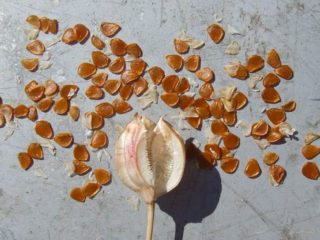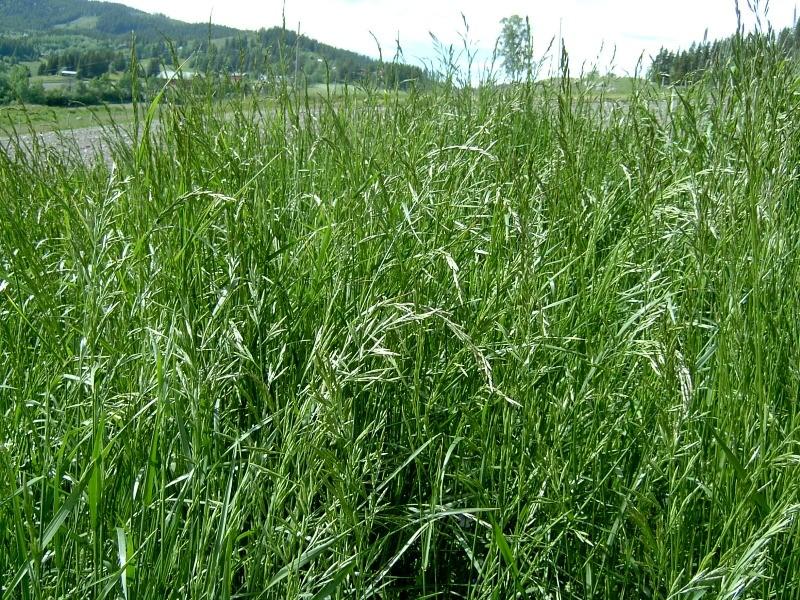Content
Roses are called the royal flower. Not a single luxurious bouquet is complete without their participation. The crop is difficult to grow, especially in the Russian climate. However, there is a winter-hardy variety with good immunity. Planting Canadian roses in the ground follows the standard scheme. However, it will be useful for the gardener to get to know it in a little more detail.
What are Canadian roses
Ornamental crops require regular care, which cannot be said about the Canadian rose. Its flowers are lush and elegant. This variety is resistant to many fungi, such as powdery mildew. It does not require shelter for the winter and special preparations.

Designers advise placing plantings in flower beds and using them to decorate borders and geometric compositions
Among the main advantages of the type:
- pleasant aroma;
- fast adaptation;
- possibility of planting in open ground;
- decorativeness;
- low demands on conditions.
Canadian rose produces double flowers that are resistant to weather conditions.
The buds may have a red, white, beige or pinkish tint. There are also intermediate options.
The seedlings demonstrate good survival rate in cold areas, which is why the variety has become popular among designers. Although the culture looks more compact than the southern representatives, it is able to withstand temperatures down to -30 °C. However, it is advisable to hill up the root area for the first winter.
Canadian rose blooms in early summer, the buds remain viable until autumn. The leaves can be light or dark green - this depends on the intensity of light and the age of the plant. The decorative variety is notable for the fact that it has few thorns; florists value this very much.
For several years, Canadian botanists have been trying to create a winter-hardy variety. The result met all expectations and even more - it had excellent regenerative ability. Thanks to this, the Canadian rose quickly recovers after winter. Even in cases of severe frosting, shoots can grow from buds on the roots.

Despite strong immunity, plantings can develop rust if not cared for
To maintain their shape, Canadian roses should be pruned. The plant has excellent immunity. It is suitable for beginners and pros. The variety can be affected by pests, which are aphids and spider mites. Standard preventive measures are spraying with insecticides.
How to plant Canadian rose
Planting a Canadian rose involves following simple agrotechnical rules.By adhering to them, the gardener will increase the crop’s chances of survival.
Selection and preparation of seedlings
First, it is necessary to conduct a visual selection. Healthy material can be distinguished by thick roots, fresh shoots, and the absence of spots. Botanists recommend buying seedlings that are two years old or more.
Nurseries sell grafted and own-rooted specimens. Both methods are good for further planting. If a crop is purchased for the purpose of growing in the northern zone, own-rooted specimens are purchased. Due to the grafting, the stems may be damaged by impending frosts.
Often the Canadian rose is covered with wax. After purchase, it should be removed and the raw materials should be placed in the refrigerator (60 minutes). Immediately before planting, the material is soaked in a root formation stimulator (2-4 hours). In this case, the entire plant is immersed in the solution, not just the lower part.

Among Canadian roses there are park and explorer roses.
Then two strong stems are cut off from the Canadian rose, leaving two buds. It’s good if the roots and stems are identical in size.
Choosing a landing site
Planting is usually carried out in early spring - the so-called cold start. If the region is northern, work is carried out in May. It is less commonly grown in the fall, as the Canadian rose needs time to form roots.
As for the location, the variety prefers sunny areas. The area should be ventilated - one of the preventive measures. A low area would be a bad choice because a lot of moisture accumulates there.
Soil preparation
Canadian roses love nutritious soil. Therefore, a month before planting, the garden is dug up and fertilizers are applied. Loose, neutral soil is optimal.
Canadian rose planting technology
After the preparatory work, they proceed directly to planting. Dig a hole 70 cm deep and lay drainage. They can use sand or expanded clay. A space of 35-45 cm is made between neighboring crops. This is the minimum distance, which it is advisable to increase if possible.

After planting, Canadian roses should be treated with folk insect repellents.
The planting hole is filled with ash, 1 tbsp. l. fertilizers for ornamental plants, humus and peat. After mixing, the seedling is placed in the center and dropped in drops. The grafting site should be 2-3 cm in the ground for the roots to form correctly. The final stage will be watering and mulching.
Caring for Canadian roses
The planting process is only the first stage. Before a Canadian rose can bloom, it needs care. It consists of periodic feeding, productive watering, pruning and a number of preventive measures.
Top dressing
Culture deserves special attention in the spring and summer. She requires nutritional supplements. The number of flowers and shoots will depend on the amount of nutrients. In April, they are fed with nitrogenous fertilizers, they stimulate growth. During the flowering period, Canadian roses need potassium and phosphorus.
Watering
The culture needs one important event - watering. When solar activity is high, humidity levels are key.Viability, resistance to diseases and pests depend on it. Two buckets are enough for one bush. The water should not be ice cold. Watering is carried out as the soil dries out. If a crust appears near the stem, this is a signal to action.
How to prune Canadian roses
After the snow melts, pruning is carried out; Canadian roses are pruned in the following order:
- Sanitary. It consists of annual removal of frozen and damaged areas.
The instrument must be disinfected
- Rejuvenating. Curved, non-viable shoots are cut off to provide strength for the formation of new ones.
This also includes cutting off faded buds.
- Formative. Necessary for forming; without pruning, the bush can grow.
To avoid injury from the thorns of the Canadian rose, wear gloves
Reproduction methods
The crop is propagated by vegetative methods - division, layering and cuttings; the Canadian rose retains the features of the parent varieties, so you don’t have to worry about this.
When propagating by layering, a hole is dug near the mother plant. A young branch is placed in it and pressed with a bracket. The incision is not treated with anything, but is immediately covered with earth. This will stimulate faster root growth. However, part of the stem with 2-4 buds should rise above the ground.
The cuttings are left for the winter, forming a shelter. In spring, Canadian roses separate. You shouldn’t get carried away with planting a large amount of material. Such propagation can lead to weakening of future roses.
It will be useful for beginners to become familiar with dividing the bush. It is considered the simplest. Before the buds open, dig a hole under the mother plant. The roots are found in it and separated with pruning shears.The “new” crop must have shoots and roots. To accelerate development, the stems are cut off, leaving two buds.

The cut areas are treated with garden pitch or coal
Propagation of cuttings involves cutting the strongest shoots. They are obtained after the first flowering. The optimal length of the cutting is 25 cm. The cut is made at a right angle from above, and at a sharp angle from below.
After this, the cuttings are deepened into the nutrient substrate. Planting Canadian roses can be done indoors or outdoors. The material is placed at an angle, at a distance from each other. To create a suitable temperature, the cuttings are covered with a bottle. As they grow, the cover is removed, the plantings are watered abundantly and shaded with fabric.
When propagated by cuttings, the owner will receive a healthy and stable crop. The Canadian rose will have time to take root by August, which will make it possible to survive the Russian winter. It must be remembered that the splendor of flowering depends not only on the quality of planting, but also on the vigilance of the gardener.
Conclusion
Planting Canadian roses in the ground follows a generally accepted scheme. It is identical to other ornamental bushes. Although the plant does not cause any trouble, it should be checked for pests and disease symptoms. Preventative measures will help protect the variety from upcoming dangers.











